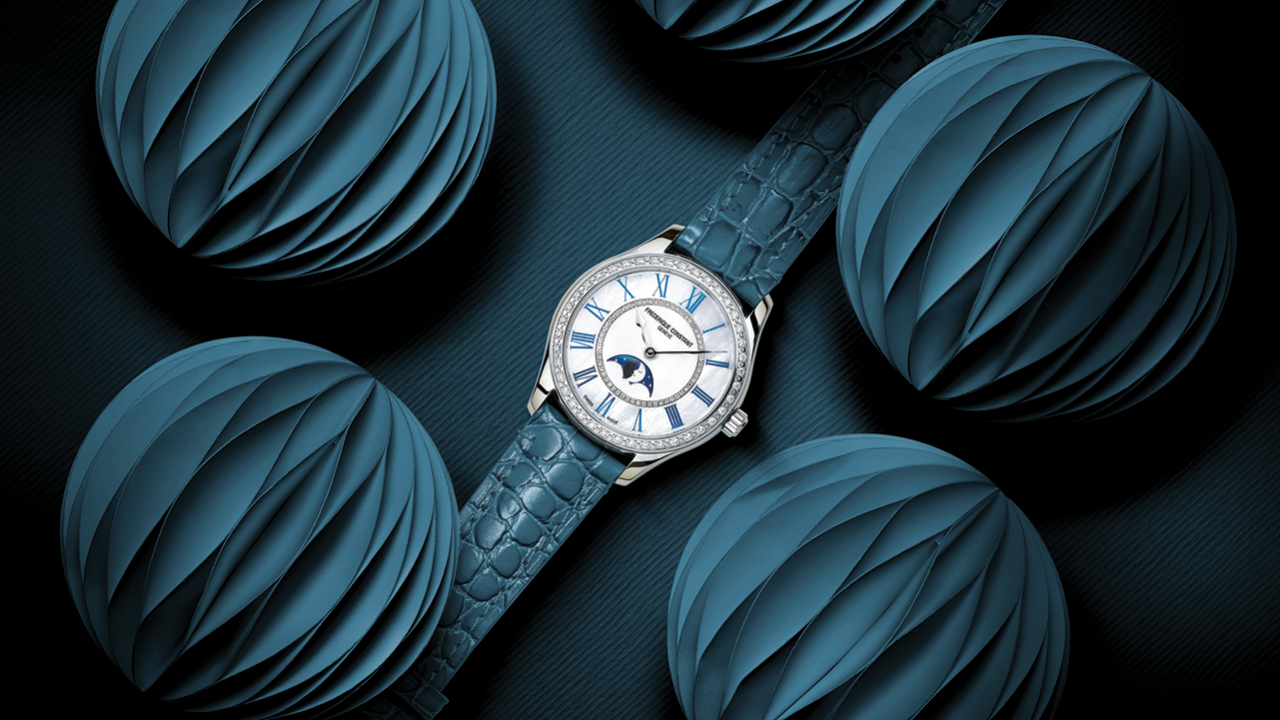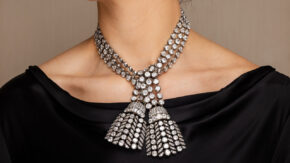Customization
Offering clients a level of customization and choice is key, as collectors continually chase individuality. The most popular method of delivering this is through straps, and there is a drive to create straps that collectors can change by themselves without having to visit a jeweler.
Hermès’s new women’s launch, the Cut, highlighted this trend. The luxury maison gives customers the option to buy additional straps separately, which they can easily click on and off in seconds thanks to a patented system.
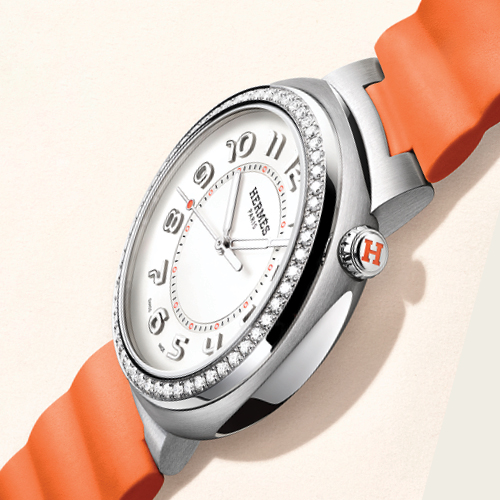
Piaget also offered customization on its Black Tie watches. As part of a collaboration with the Andy Warhol estate, a special line of these watches can now be made to order with dials of hard stone or other unusual materials, such as fossilized wood.
Norqain took the customization trend even further: It used the show to launch its Wild One of 1 service, which allows clients to build custom watches on its website. The buyer has a say in every element, from the movement to the style of the hands and shock absorbers, making for 3.5 million possible configurations.
Moon Phase
There seemed to be a revival of moon-phase complications — subdials that track the position of the moon — at this year’s show, and the best had a creative twist.
Frederique Constant introduced a motif with two crescent moons kissing, while Raymond Weil replaced the traditional moon with a human face. Laurent Ferrier presented a double moon phase to represent the moon in both hemispheres, with translucent petrol-blue enamel discs covering up the moons to indicate waning and waxing.
Metier d’art
Many brands at Watches and Wonders pushed boundaries creatively as well as horologically, with launches that celebrated various métiers d’art, including marquetry, enamel work and decorative engraving.
Van Cleef & Arpels’s Lady Arpels Jour Enchanté watch was a tour de force in enamel work, creating three new patents in its wake. It featured façonné, a new style of buildable enamel used to craft three-dimensional flowers. The brand also set diamonds directly into plique-à-jour enamel.
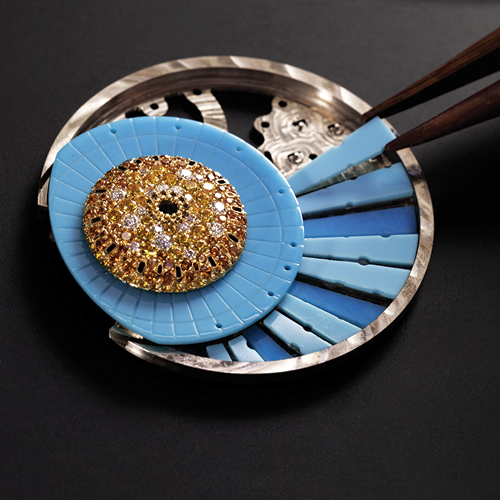
The Hermès Arceau Chorus Stellarum featured an on-demand animation of a skeleton horse riding across the dial. The complex artwork incorporated many skills, including engraving and enamel work.
Color
The fervor for colorful watches remained strong at Watches and Wonders, with lots of experimentation and bold choices across the dials and straps. A particularly chromatic stand was that of Nomos Glashütte, which launched a special run of Tangente 38 Date watches that offered 31 different color combinations.
In terms of trending hues, there seemed to be a revival of blue watches, with softer shades emerging — such as the baby blue in the dial of a new Rolex 1908 and in the colored sapphire crystal case of Hublot’s Big Bang MP-11.
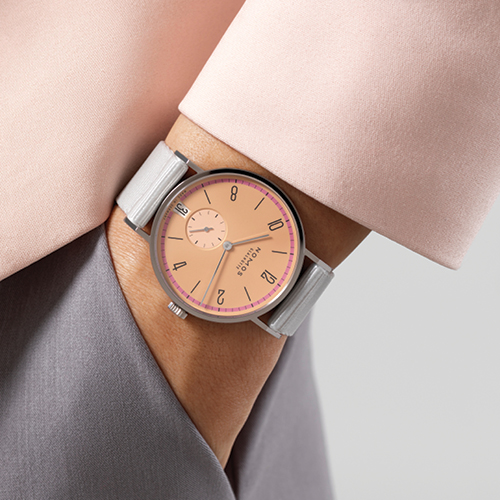
Green also remained hugely popular, and there was some excitement around Patek Philippe’s use of deep purple. Other companies produced berry hues as well.
There were some anti-color trends, too. IWC and Piaget were among the brands to showcase sand-colored dials, and there was a strong trend of black watches.
Watches as Jewels
The lines separating jewelry, watches and couture blurred at this year’s show. Chanel’s collection, which took inspiration from the craft of couture and Coco Chanel’s workshop, included many timepieces that could double as necklaces. These were secret watches hidden in long pendants that took the form of dressmakers’ models, safety pins and thimbles. The brand also had a leather-and-gold design inspired by its bag straps; it is wearable as a necklace or a belt, with a simple timepiece attached as if it were a charm.
Vacheron Constantin’s transformable Grand Lady Kalla set also tapped into this theme. The wearer can transfer the diamond-set dial between a pearl tassel necklace and a diamond-set watch strap, and replace it on either piece with a diamond jewel that mimics its shape, thereby transforming that piece into a regular necklace or bracelet.
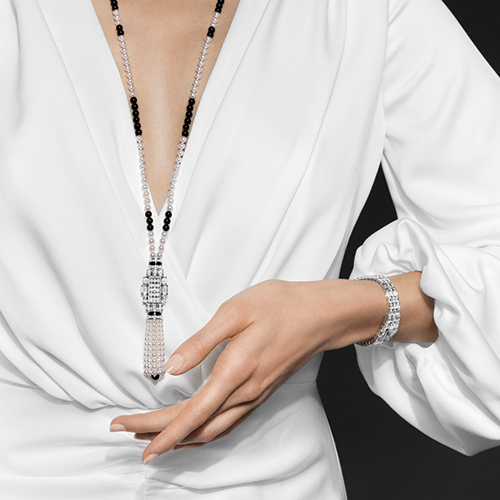
Smaller Case Sizes
Talk at nearly every stand revolved around offering smaller case sizes. In fact, online retailer Watchfinder estimates that 36% of all watches that launched at the 2024 show were between 36 and 38 millimeters. While some brands scaled down subtly by a millimeter or two, others boldly embraced the trend with truly tiny timepieces.
Cartier adhered to the latter strategy, presenting the 24- by 16.5-millimeter Tank LC Mini and the 28- by 15.2-millimeter Tank Américaine Mini, as well as a diminutive diamond dress watch. Interestingly, Cartier did not brand the first two as women’s watches; generally, the downscaling of cases seems less about appealing to women than creating genderless collections. At the same time, men are seeking out small dress watches, thanks in part to high-profile collectors like actor Timothée Chalamet.
One of the downsides to downsizing is the movement. Making it smaller is a complicated process. As such, many women’s watches have historically run on quartz movements, though there is now investment in smaller mechanical movements. Chanel, for example, launched its Calibre 12.2 movement at the show, which can fit within a 32-millimeter case. It also announced that from this year on, it will stop fitting J12 watches with quartz movements, switching to the 12.2 instead.
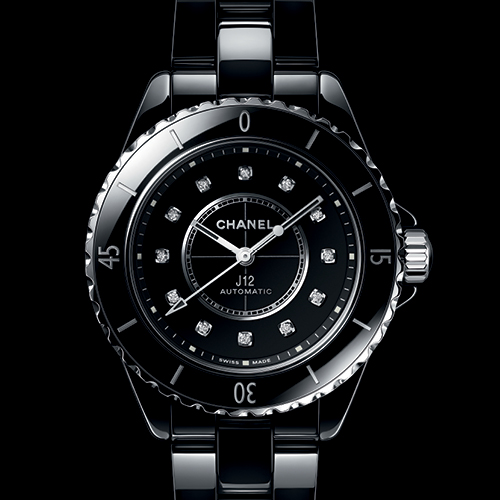
Bold Gold
Yellow gold proved popular among new launches at the show, with brands using the metal not just for dress watches but for tool watches as well. Rolex released a solid yellow-gold Deepsea diver’s watch for the first time, while Tudor introduced its first yellow-gold Black Bay, which had a brushed finish.
Piaget leaned into the retro vibe often associated with gold watches, releasing the Polo 79 in 18-karat gold. The design, which creates the illusion of being crafted from a single block of gold, is based on a watch from 1976, but the company has updated the alloy to produce a warmer color.
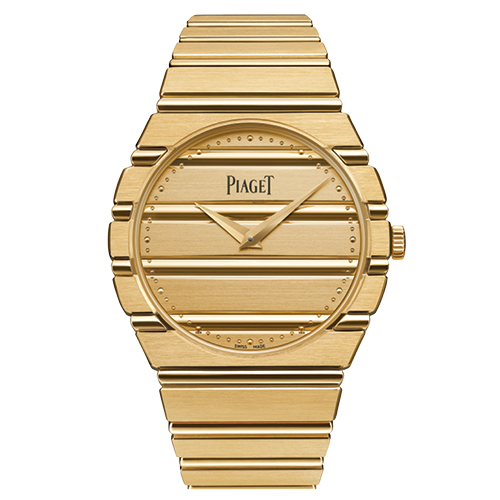
In dress watches, maisons paired yellow gold with black dials and straps, or created elaborate gold straps. Though Patek Philippe chose rose gold, it showcased the skill of its goldsmiths by creating a 1970s-inspired chain-style bracelet for its Golden Ellipse watch. The bracelet comprises 363 components with 300 hand-crafted links, and its construction achieved a new patent.
Main Image: Frederique Constant Classics Elegance Luna watch. (Frederique Constant)
This article is from the July-August 2024 issue of Rapaport Magazine. View other articles here.
Stay up to date by signing up for our diamond and jewelry industry news and analysis.
